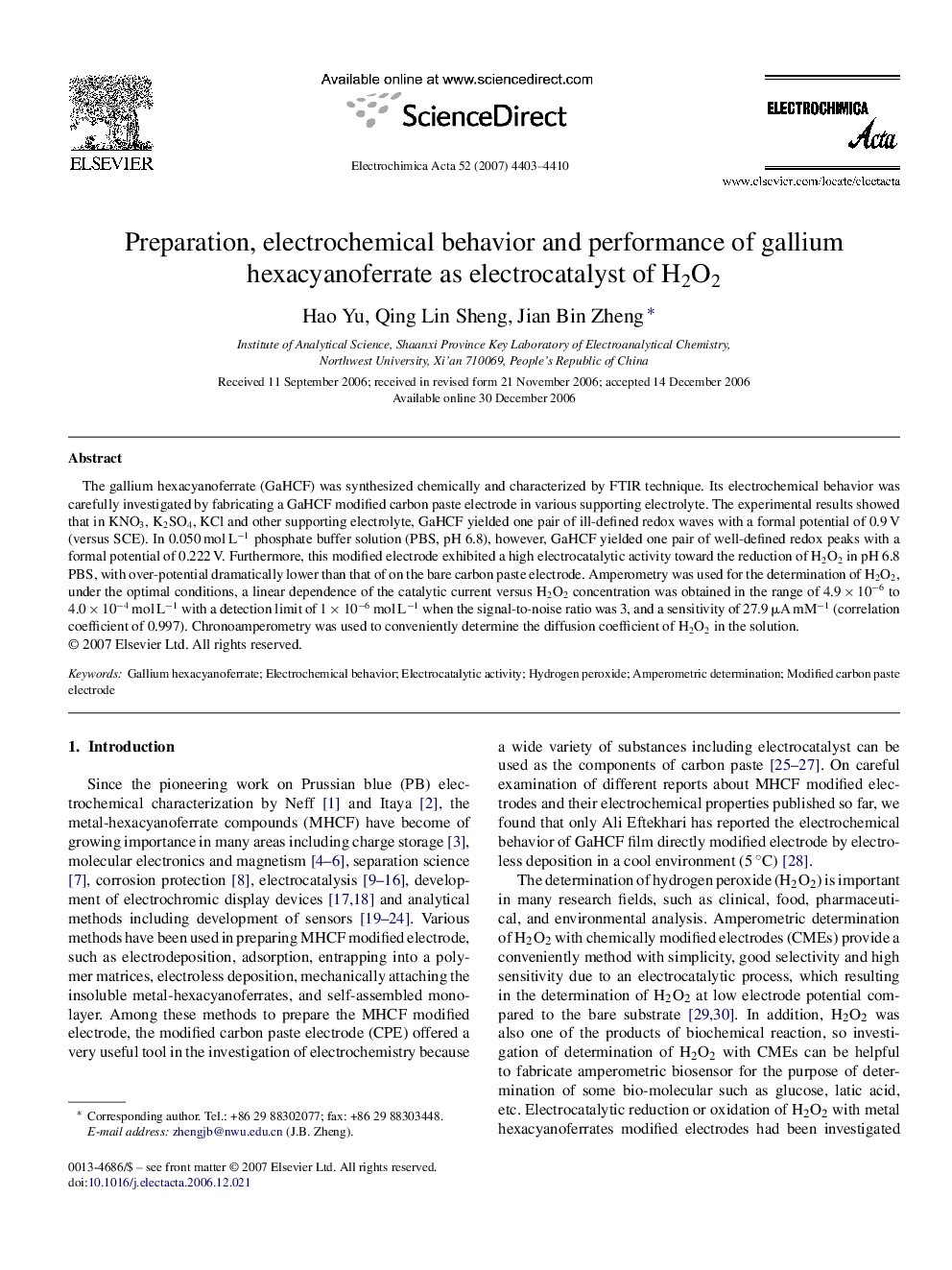| Article ID | Journal | Published Year | Pages | File Type |
|---|---|---|---|---|
| 195927 | Electrochimica Acta | 2007 | 8 Pages |
The gallium hexacyanoferrate (GaHCF) was synthesized chemically and characterized by FTIR technique. Its electrochemical behavior was carefully investigated by fabricating a GaHCF modified carbon paste electrode in various supporting electrolyte. The experimental results showed that in KNO3, K2SO4, KCl and other supporting electrolyte, GaHCF yielded one pair of ill-defined redox waves with a formal potential of 0.9 V (versus SCE). In 0.050 mol L−1 phosphate buffer solution (PBS, pH 6.8), however, GaHCF yielded one pair of well-defined redox peaks with a formal potential of 0.222 V. Furthermore, this modified electrode exhibited a high electrocatalytic activity toward the reduction of H2O2 in pH 6.8 PBS, with over-potential dramatically lower than that of on the bare carbon paste electrode. Amperometry was used for the determination of H2O2, under the optimal conditions, a linear dependence of the catalytic current versus H2O2 concentration was obtained in the range of 4.9 × 10−6 to 4.0 × 10−4 mol L−1 with a detection limit of 1 × 10−6 mol L−1 when the signal-to-noise ratio was 3, and a sensitivity of 27.9 μA mM−1 (correlation coefficient of 0.997). Chronoamperometry was used to conveniently determine the diffusion coefficient of H2O2 in the solution.
